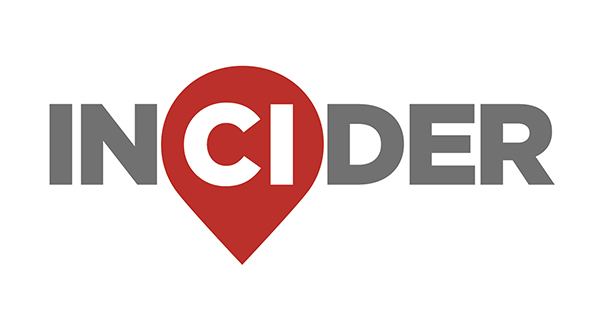Students are increasingly transferring out of Cy-Fair ISD to pursue other education options, such as charters, private schools and homeschooling, according to a report presented to the district in April.
CFISD has seen a 59.1% increase in students leaving the district to enroll in charter schools since fall 2017, according to an analysis conducted this year by data consulting firm Population and Survey Analysts. More students are also leaving the district to pursue virtual learning and other districts, the report found.
Many factors go into district enrollment changes, PASA President Stacey Tepera said, but one trend has been consistent at the state and national levels: parents now have more choice when it comes to their child’s education, and are taking advantage of it.
“[Parents] want more opportunity than just being zoned to their local school district,” said John McLendon, chief of schools for charter district Bob Hope Schools, which is opening a Cy-Fair campus in August. “School choice is very much a topic of national conversation; it’s not just going on in this state.”
What's happening?
According to the PASA analysis, CFISD is expected to see a 1.1% enrollment dip by 2034. That’s a projected net loss of about 1,300 students, factoring in students who transfer into the district and start kindergarten each year.
Birth rates have also declined since 2020, the report found, meaning fewer kids are expected to enter the district over the next few years.
Chief Financial Officer Karen Smith said a 1% decline in enrollment equals a $7.3 million decrease in state funding for CFISD. The district built its Fiscal Year 2025-26 budget with the 1% decline in mind, Smith said, noting that enrollment is projected to trend flat in the future.
“Since declines in enrollment impact state funding, any decline in enrollment is a concern,” Smith said. “A decrease in funding can impact programs and future pay raises.”
Tepera said she believes the enrollment decline was inevitable. She told the board of trustees in April that the district is entering a stabilization phase, meaning demographics are naturally stabilizing after years of rapid growth. This is in part because development is tapering as projects finish, she said.
Diving deeper
Charter schools are free, publicly funded schools separate from traditional independent school districts, meaning they have more flexibility in their curriculum and teaching methods.
At least 20 charter schools have opened in the Greater Houston area since 2019, six of which fall within CFISD boundaries. Texas charter districts Bob Hope School and Harmony Public Schools are each opening a campus in Cy-Fair this fall with about 520 students and 650 students, respectively.
McLendon said Bob Hope School conducted demographic surveys before settling on its campus at the former Cypress Christian School facility. The district considered factors such as language spoken at home and household income, McLendon said, as the charter district has historically served bilingual and low-income students.
Harmony Science Academy-Bridgeland will also welcome its inaugural group of students in August. Principal Vivian Pham said the Bridgeland community was an attractive choice for Harmony’s expansion because of rapid development near the Grand Parkway.
Harmony has five other campuses within CFISD boundaries, which Pham said have seen higher demand in the last five years.
According to Texas Education Agency student transfer reports, virtual alternatives for students transferring out of CFISD in 2024-25 included online learning through Texas universities, such as The University of Texas at Austin and Texas Tech University. Cy-Fair enrollment in virtual programs increased after the COVID-19 pandemic.
Public input
Local parent Sarah Delp transferred all four of her children out of CFISD schools and into the Aristoi Classical Academy charter school for the upcoming school year.
She said she was concerned about the consequences of computer-based learning and wanted to switch her kids to a more traditional liberal arts education. Delp also cited CFISD’s library staff cuts in June 2024 as a factor in her decision.
“We’ve always been very supportive of the public school system,” said Delp, who attended CFISD schools. “But we had always said we are willing to do whatever was best for each of our kids.”
Delp said she would consider re-enrolling her kids in CFISD if schools offered more time for students to play outside and freely interact with their peers throughout the day, calling play a “pivotal” part of education.
In their words
- “Public schools are the backbone of our communities. We serve all students, regardless of background, income or ability, and we do so with a commitment to excellence, opportunity and transparency,” Tonya Goree, chief academic officer for CFISD said.
- “There can be a variety of reasons why [parents] take their kids out of the local school district and put them at a charter. They may think their kid isn’t being challenged enough, [or] they want their kid to have access to a dual language program or Montessori program free of charge," John McLendon, chief of schools for Bob Hope said.
Gov. Greg Abbott signed Senate Bill 2 into law in May, allowing eligible families to access public dollars in the form of “education savings accounts” for private school tuition. Families can receive about $10,000 per child to enroll in private schools.
Laura Colangelo, executive director of the Texas Private Schools Association, said it’s unclear exactly how the law will impact CFISD enrollment. An estimated 70,000 to 80,000 students statewide may receive funding from an ESA in 2026-27, Colangelo said, depending on special needs and homeschooled applicants.
“We can’t predict how many parents from [Cy Fair] will apply to ESAs, but private schools are not expecting a huge influx,” said Colangelo, who lobbied in favor of SB 2. “It will affect some students, ... but it will not create a mass exodus from public schools.”






